On this page:
Importance of trees and planting in urban design
Trees can provide shade, shelter, and cool air pockets. They can screen an unsightly view, act as landmarks, or provide a sense of enclosure with leafy walls and ceilings.
Trees are frequently the most important element for setting the character of an area. A tree–lined street can be beautiful even when the architecture is mundane. Trees lining streets and paths in parks make the space comfortable and desirable. Places with trees tend to attract more people. A landscape changes with the seasons and gives people a sense of passing time and dynamic vitality.
6.3.1: select trees and planting that are fit for purpose
In selecting plants, have regard to the landscape heritage, size of plants at maturity, microclimate and soil conditions.
- Select lawn types that are suitable for sitting on and for recreation.
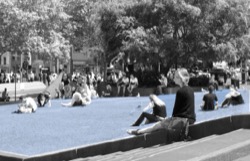
Tip: if a public space is heavily trafficked then a hard-wearing surface may be more suitable. Synthetic lawn surfaces may be an option. - Use drought–resistant plant species when irrigation is not available.
- Use plant species appropriate to the available root space.
- Select deciduous tree species where winter sun is desired.
- Select dense, canopied tree species where summer shade is desired.
- Select evergreen species with dense foliage where wind protection or screening is needed.
6.3.2: ensure trees and planting contribute to local identity and context
- Select trees and planting appropriate to the cultural context and local identity.
- Provide trees and planting that engage the senses.
Tip: plants that change appearance with the seasons provide a dynamic experience and enhance a sense of place. The sounds and scents of plantings are also important considerations.
- Select trees in keeping with the scale of the street or public space.
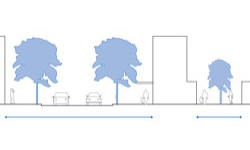
- Position trees and planting to define a street or path.
Tip: trees placed between a pedestrian path and a traffic lane can provide both psychological and physical protection from vehicles.
- In wide streets or large open spaces, position trees to form a canopy and enclose the space.
6.3.3: ensure trees and planting support the safety and amenity of public space
- Select tree species with clear trunks, and no branches or foliage below 2500 mm in height.
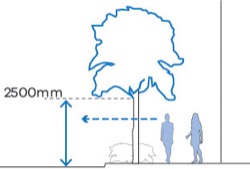
Tip: foliage free zones between 600 mm and 2500 mm from the ground allow clear sightlines and eliminate opportunities for concealment. - Select shrub and ground cover plantings to be no more than 600 mm in height.
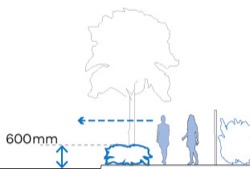
Tip: in areas behind a non-climbable fence or screen, plantings may be greater than 600mm, as the fence provides protection. - Position trees and planting to allow clear sightlines along streets and across the different mode paths.
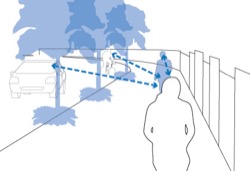
- Position trees away from overhead wires and public lighting to limit overshadowing of public lighting and interference with overhead wires.
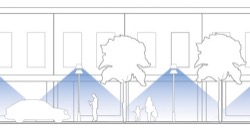
Tip: this will require coordination between utilities agencies and local councils. - Where protective barriers are required around landscaping, combine with other street furniture such as seating, bicycle posts, or public artwork.
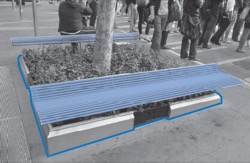
- Provide tree grates that are flush with the surrounding pavement surface.
Tip: making grates flush with the pavement surface avoids trip hazards and allows the potential for water gathering. Porous pavements may be an effective alternative.
6.3.4: ensure trees and planting are managed and maintained
- Manage ongoing maintenance and replacement of trees and planting according to a precinct-wide plan.
Tip: when undertaking street or path works, replant missing trees.
- Manage street planting to maintain clear sightlines along paths and streets.
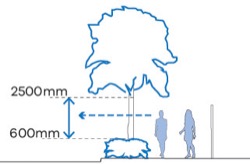
Tip: landscaping along roads, streets, pedestrian and bicycle paths should not block sightlines for drivers, pedestrians or cyclists. - Maintain vegetation clear of lighting to allow direct illumination of paths.
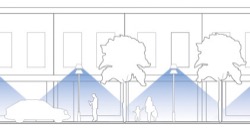
- Maintain trees clear of overhead wires.
Page last updated: 13/06/23